Kawai KDP120 Review
We rated the Kawai KDP120 9/10. I really like the harmonic imagining sound engine, and the overall details that Kawai has put into this product, like authentic damper resistance. In addition to this, the update to their RCH action in the KDP120 makes the keyfeel of the instrument all the more realistic. This instrument has a lot to love, including 88-key sampling, onboard recording, and excellent reverb/ FX.
However, since the instrument doesn’t have Bluetooth audio or faux ebony and ivory keys, we took off just one point. Overall, this is a great intermediate instrument and home piano!
$1,499.00
We rated the Kawai KDP120 9/10. I really like the harmonic imagining sound engine, and the overall details that Kawai has put into this product, like authentic damper resistance. In addition to this, the update to their RCH action in the KDP120 makes the keyfeel of the instrument all the more realistic. This instrument has a lot to love, including 88-key sampling, onboard recording, and excellent reverb/ FX.
However, since the instrument doesn’t have Bluetooth audio or faux ebony and ivory keys, we took off just one point. Overall, this is a great intermediate instrument and home piano!
Kawai KDP120 Overview

In this Kawai KDP120 review, I will be showing you the ins and outs of a digital piano with onboard recording, 88-key sampling, and much, much more!
KDP stands for Kawai Digital Piano. The KDP120 model first came out in June of 2021, and was designed to replace the earlier Kawai KDP110. The KDP120 has several new features when compared to the KDP110, including low volume balance, a slightly lighter frame, and 2 new color options.
Features
Internal Recording
I love when entry-level pianos have internal recording. The Kawai KDP120 has three tracks worth of internal space, and can record a maximum of 10,000 notes. The only downside to this recorder is that it cannot multi-track. Composers and singer-songwriters may need to look to a more advanced model, or connect the instrument to an interface or computer with a USB to MIDI cable.
Metronome with Loads of Time Signatures
The KDP120’s metronome includes the following time signatures: 1/4, 2/4, 3/4, 4/4, 5/4, 3/8, 6/8. Many metronomes only click in 4/4, 3 /4 and 6/8- It can be difficult to find a built-in metronome that has the metronomic emphasis on 5/4 or 3/8!
Four Hands Mode and More
The KDP120 has a mode that is made specifically for four-handed duets. Four-hand mode divides the keyboard into two sections that are exactly the same, with 44 notes for each player.
Two other modes within the KDP120 include split mode, and dual mode. Split mode allows you to split a keyboard in two and assign a sound to each side. Dual (also known as layer mode) allows you to stack two sounds on top of one another to achieve a unique sound and timbre.
Built-in Audio Features Including Sleek FX
This model includes some really cool FX, including 6 reverbs, and something called brilliance. Brilliance brightens up the sound, and the reverbs change the feeling of the size of the room. Also inside this audio section, you can also find a built-in effect called low-volume balancing. Low-volume balancing is supposed to boost the harmonics when you are playing at low volumes, so that your playing experience is just as crisp as when you are playing loudly.
Clear Speakers
The KDP120 has two built-in speakers that measure 4.7 inches apiece. They have a robust and clear sound for their size. Each speaker also comes with a 20-watt amplifier.
While the KDP120’s speakers won’t shake the roof, they are plenty for the beginning to intermediate player who plans to practice inside their home.
Harmonic Imaging Sound Engine
The KDP120’s harmonic imaging sound engine includes 4 piano sounds and 11 instrument sounds. This includes: Classic E.Piano, Modern EP, Jazz Organ, Church Organ, Harpsichord, Vibraphone, String Ensemble, Slow Strings, and more. I have to say, the spacey sounds such as choir, new age pad and atmosphere are pretty out of this world. While there might not be many sounds, they are high-quality.
So, why is Kawai sampling so good?
When Kawai creates a sound, sample each key, instead of just one key. That means they sample each sound at least 88 times!
RCH II Action, Triple Sensors
While the KDP120 isn’t the newest of the new, it has Kawai’s most updated type of action: Responsive Hammer Compact II. This keyboard also has triple sensors, which means it can pick up more nuance than keyboards with double sensors. In addition to this, the KDP120 model also has matte keys, which help prevent your fingers from slipping during performances.
Included Lessons, Staple Etudes
All new Kawai digital keyboards come with built-in Alfred lessons to help get you started. I personally use Alfred books in piano studio. They are easy to use and understand!
The KDP120 also has more intermediate-level etudes such as those by Beyer, Burgmüller, and Czerny. One of the many things that I love about Kawai models is that, when you buy a piano, you can learn to read sheet music without a teacher- Or at least begin the process!
Built-In Pedals, Damper Resistance
This model has three sturdy and authentic-feeling built-in pedals which supports half-pedaling. The 120 also has an included feature called damper resistance simulation, which makes the grand pedal feel system more heavy and realistic.
Other Features:
- Kawai Concert Magic
- New piano app support
- Cabinet redesign
- New color options
- Adjustable music rest
All digital Kawai instruments come with something called Kawai Concert Magic, which is a learning tool for those who don’t know how to read sheet music. But. then again, it’s still fun for those of us who do! Kawai Concert Magic is an interactive feature that lets you control the piece’s rhythm and expression. Concert Magic automatically fixes incorrect notes, so you can just play for enjoyment.
If you’ve read my other Kawai reviews, you’ll know that Kawai piano apps such as PianoRemote and PiaBookPlayer don’t exactly have the highest ratings. Luckily, the 2021-2023 models have free app support.
The KDP120 has been redesigned to have a cabinet with rounded edges, and a more stable base. While the KDP110 only came in rosewood, the KDP120 can be purchased in satin white, satin black, or (of course!) original rosewood.
If you get tired of having your sheet music and iPad at different heights and angles like I do, you’re in luck. This model has a notch at the bottom of the music rest which allows you to adjust it.
Specifications

- Weight: 81.5 pounds
- Dimensions: 53.5 x 33.67 x 16 inches
- Piano Type: Digital
- FX: 7 (reverbs, brilliance)
The Kawai KDP120 is a few pounds lighter than its predecessor, the KDP120. However, please note that there is a typo in the Amazon listing that we reference- The listing for the Kawai KDP120 says that the instrument is about 50 pounds, but it is actually over 80.
Who Is It Suitable for?
The Kawai KDP120 is best suited for intermediate players, but it will serve beginners well, too.
The KDP120 digital piano has a realistic enough feel to accommodate intermediate-level players who are used to playing a grand piano during lessons. That being said, the control panel is relatively minimalist, so piano newbies will be able to navigate it, too. Composers and piano pros may also enjoy this instrument is a backup piano, but will likely want something with more sounds, recording capabilties/connectivity, and wooden action.
The KDP120 In Action
Don’t just take my word for it- Let’s take a look at the KDP120 in action. First, let’s look at this piano overview and demo by Family Piano Co.
Here are a few key notes I took from listening to the pianist and piano teacher speak and play:
- They believe that the RCH II hammer action is some of the best plastic action on the market
- The concert grand has gorgeous mids
- The mellow grand really shines in the low range
Of the sounds, the organ and E. pianos are probably my least favorite. But let us know what you think of them in the comments at the end of this article. 🙂
Amazon Reviews
This piano was rated 4.4 out of 5 stars on Amazon.com. So what did the musicians who tried this beaut out have to say? Let’s see!
Positive comments about the KDP120:
- Customers report that it is easy to put together
- It’s pretty
- The Bluetooth compatibility allows customers to connect it to multiple piano apps
- “Outstanding key action”
- One customer liked this Kawai better than high-end pianos they tried
Critical comments about the KDP120:
There were no critical comments about the 120 model. One customer did have an issue where the item was damaged during shipping and did not want to go through the return process, but that is it.
Pros and Cons

Pros
- It is simple and aesthetically pleasing
- The reverbs are stunning
- The action is super slick
- The keybed has not 2, but 3 sensors
- It has layering
- The instrument is compatible with piano remote technology/ several piano apps
- It has an internal recorder
- The Alfred books/ other learning material the piano comes with is standard rep. In the industry
- It is a multi-timbral instrument, unlike the KDP110
- It has Bluetooth MIDI
- It has an improved key cover design since the last model
The new cabinet design is simple yet beautiful, in a minimalist sort of way. Sound-wise, the reverbs are stunning for the price.
The piano has lovely action, and is very responsive to slight changes in touch and articulation. Other pros that really stick out to me include the internal recorder, which is always convenient, and the triple-sensor keybed.
There is a lot to like about the Kawai KDP120, from its 88-key sampling, to easy-to-navigate control panel.
Cons
- $1,500 is a lot of 15 sounds!
- Kawai has come out with several new models since this one
- RCH action has been updated again since this model (RCH III)
- The low volume balancing has mixed reviews among musicians
- This is a home piano, so it’s not portable
- No synthetic ebony or ivory keys
- It does not have Bluetooth audio
If you’ve been keeping up with us here on BestPianoKeyboards, you probably already know that Kawai has some new instruments on the market. One of the biggest cons is that you can get a model that is newer than this for a similar price.
Two other cons that stuck out to me are that it doesn’t have Bluetooth audio, or synthetic ebony and ivory keys- These features are both really popular and highly valued nowadays and I personally value having both in my digital instrument.
Comparable Instruments
- Yamaha YDP-144
- Kawai ES120
- If you want to upgrade: Kawai CN-29
- Casio PX-870
Of the pianos on the list, the Kawai CN-29 is the most high-quality, in my opinion, If you have the means to buy a piano closer to $2,000, this one is really worth it. It has RCH III, Kawai’s brand-new action.
Quick View
| Keys | 88 full-sized keys with responsive hammer compact action II |
| Touch sensitivity | Yes, adjustable touch |
| Sounds | 15 sounds in the soundbank, grand piano sampling |
| Recording capabilities | One-track internal recording, MIDI |
| Metronome | Yes |
| Polyphony | 192-note polyphony |
| Speakers | 40W amplifier/ Two 4.2” internal speakers |
| Headphones | 2 headphone jacks, headphones not included |
| Accessories | Bench, Power supply |
| Price point | $1,499.99 |
KDP120 Conclusion
I hope you’ve enjoyed this KDP120 review! In conclusion, the Kawai KDP120 digital piano
Music quote of the week:
“Music is enough for a lifetime, but a lifetime is not enough for music.” -Sergei Rachmaninoff

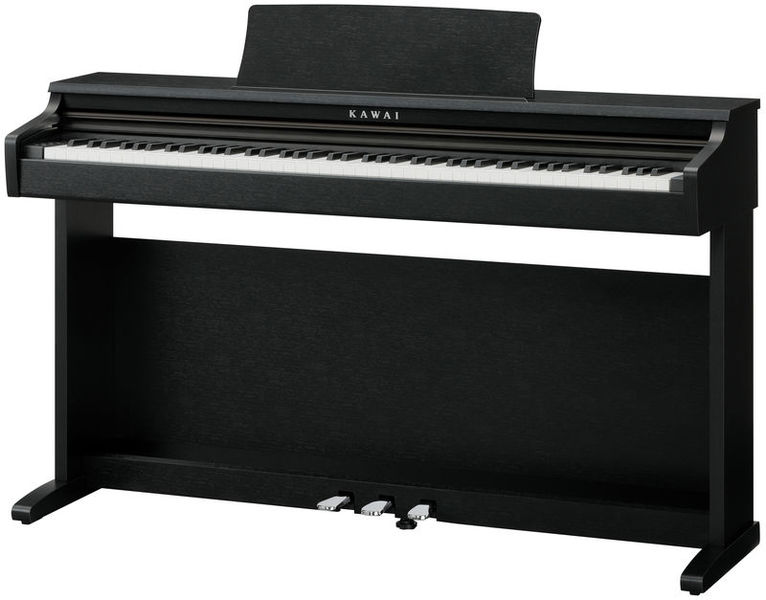
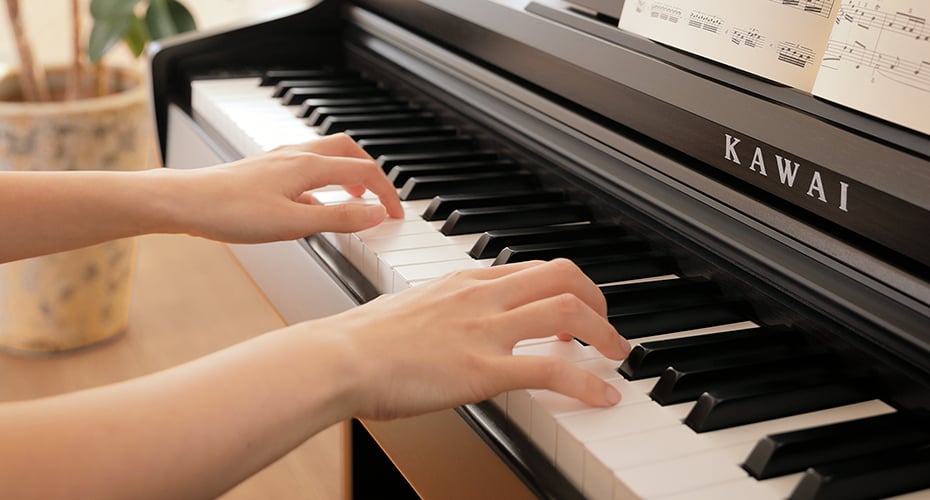

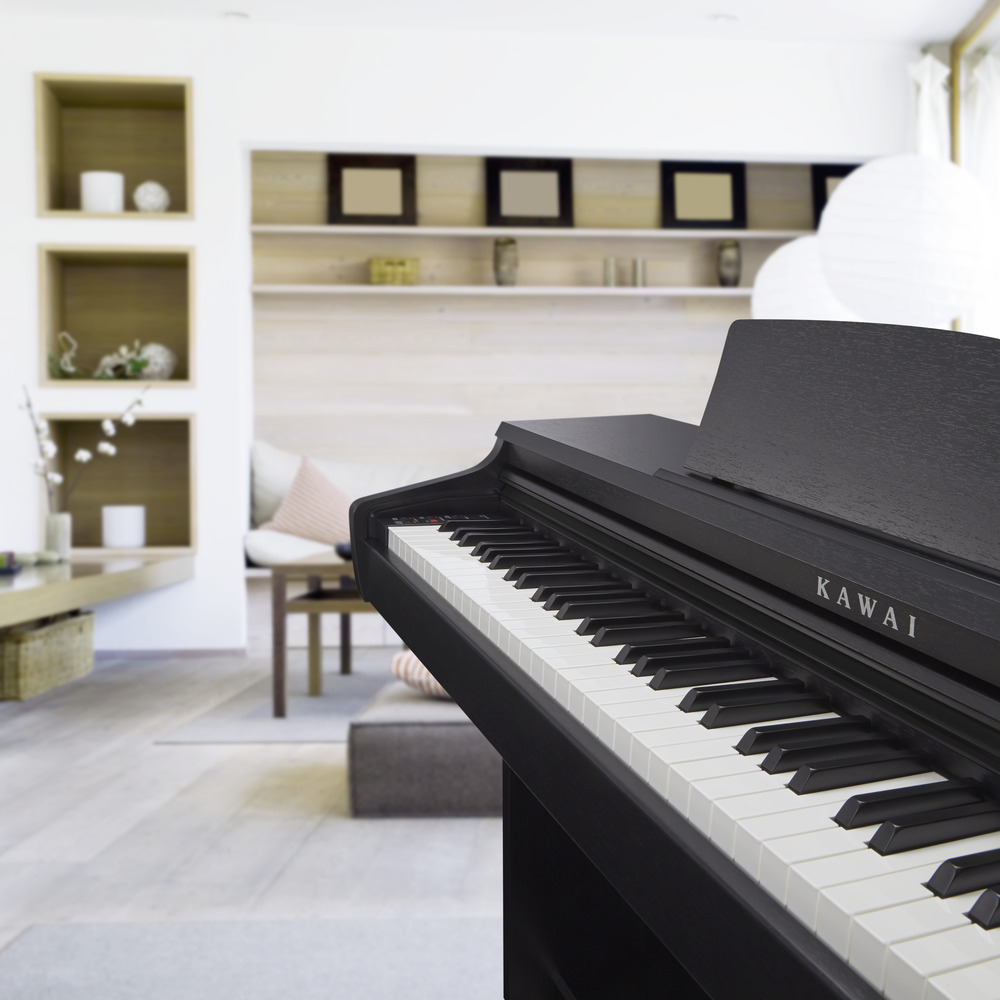
 We rated the Kawai KDP120 9/10. I really like the harmonic imagining sound engine, and the overall details that Kawai has put into this product, like authentic damper resistance. In addition to this, the update to their RCH action in the KDP120 makes the keyfeel of the instrument all the more realistic. This instrument has a lot to love, including 88-key sampling, onboard recording, and excellent reverb/ FX.
However, since the instrument doesn’t have Bluetooth audio or faux ebony and ivory keys, we took off just one point. Overall, this is a great intermediate instrument and home piano!
We rated the Kawai KDP120 9/10. I really like the harmonic imagining sound engine, and the overall details that Kawai has put into this product, like authentic damper resistance. In addition to this, the update to their RCH action in the KDP120 makes the keyfeel of the instrument all the more realistic. This instrument has a lot to love, including 88-key sampling, onboard recording, and excellent reverb/ FX.
However, since the instrument doesn’t have Bluetooth audio or faux ebony and ivory keys, we took off just one point. Overall, this is a great intermediate instrument and home piano!


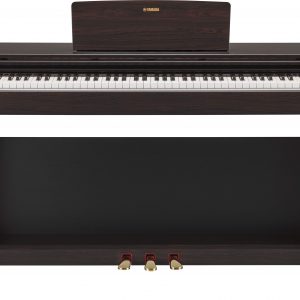
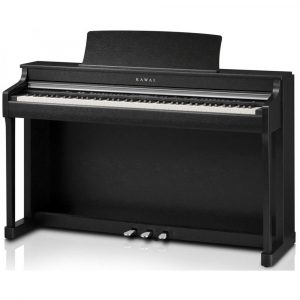
There are no reviews yet.